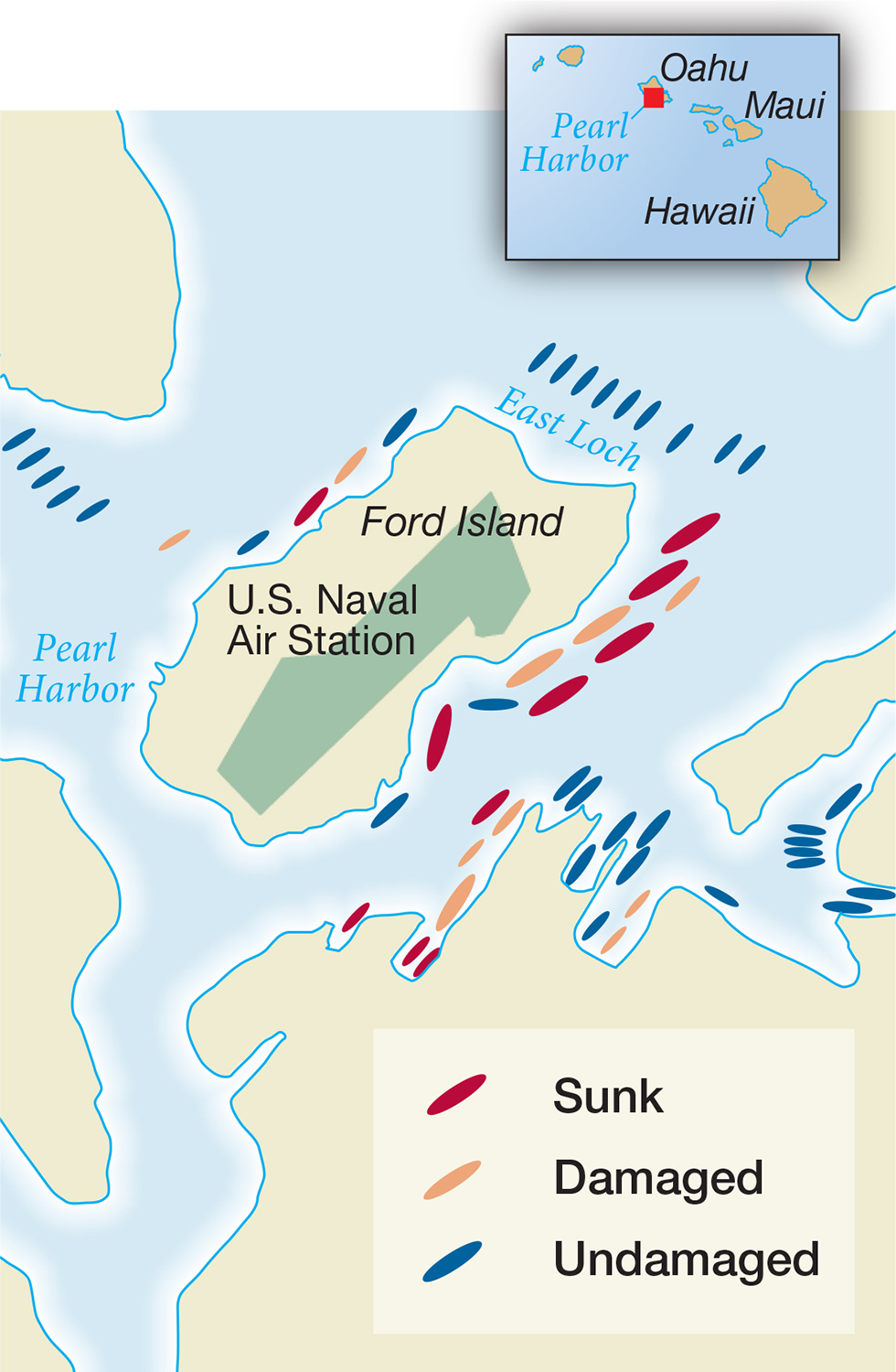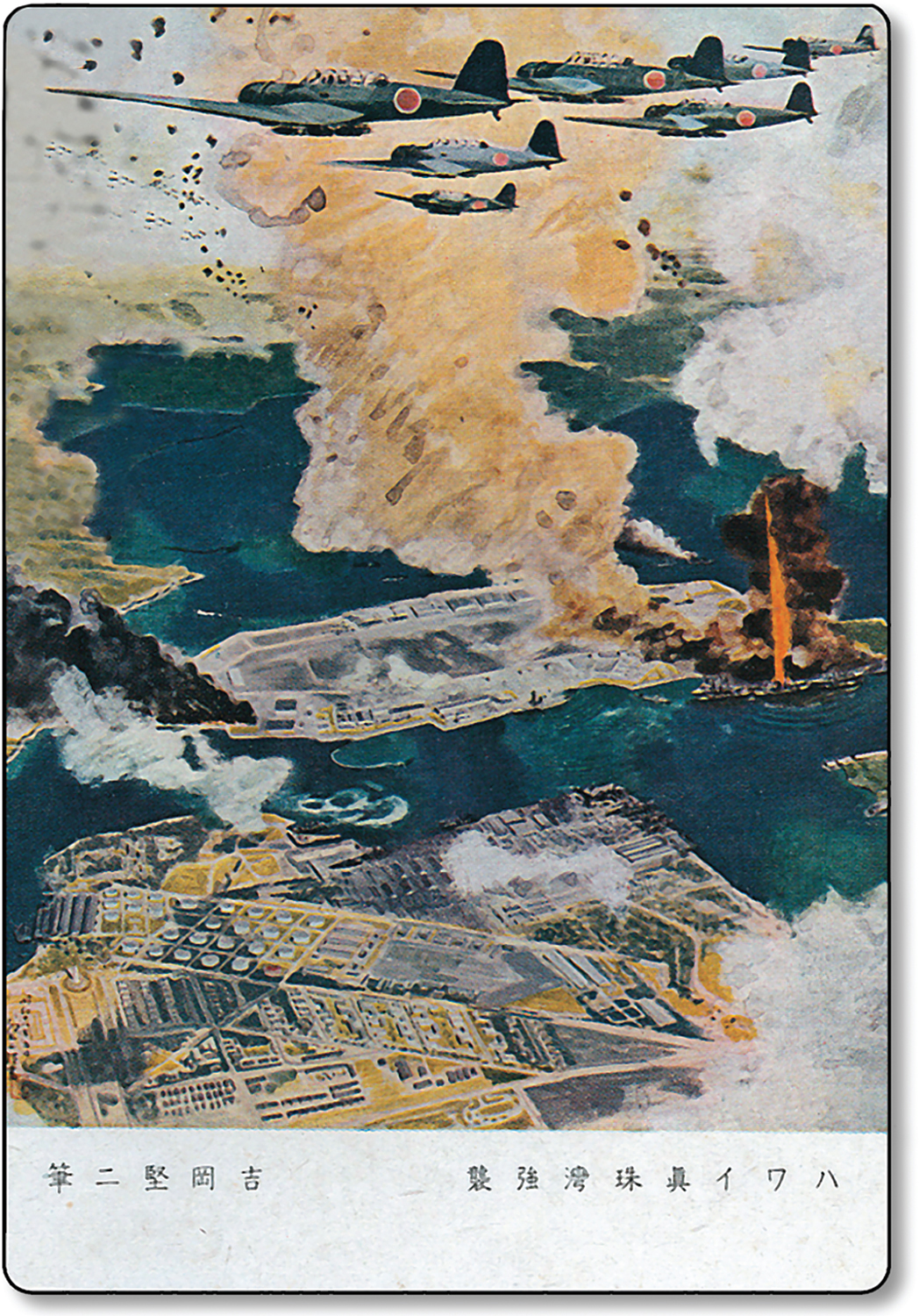Japan Attacks America
Although the likelihood of war with Germany preoccupied Roosevelt, Hitler exercised a measure of restraint in directly provoking America. Japanese ambitions in Asia clashed more openly with American interests and commitments, especially in China and the Philippines. And unlike Hitler, the Japanese high command planned to attack the United States in order to pursue Japan’s aspirations to rule an Asian empire it termed the Greater East Asia Co-


In 1940, Japan signaled a new phase of its imperial designs by entering a defensive alliance with Germany and Italy—
Instead, the American embargo played into the hands of Japanese militarists headed by General Hideki Tojo, who seized control of the government in October 1941 and persuaded other leaders, including Emperor Hirohito, that swift destruction of American naval bases in the Pacific would leave Japan free to follow its destiny. On December 7, 1941, 183 aircraft lifted off six Japanese carriers and attacked the U.S. Pacific Fleet at Pearl Harbor on the Hawai’ian island of Oahu. The devastating surprise attack damaged all of the fleet’s battleships and sunk four, killed more than 2,400 Americans, and almost crippled U.S. war-

The Japanese scored a stunning tactical victory at Pearl Harbor, but in the long run the attack proved a colossal blunder. The victory made many Japanese commanders overconfident about their military prowess. Worse for the Japanese, Americans instantly united in their desire to fight and avenge the attack. Roosevelt vowed that “this form of treachery shall never endanger us again.” On December 8, Congress endorsed the president’s call for a declaration of war. Both Hitler and Mussolini declared war against America on December 11, bringing the United States into all-
| 1931 | Japan invades Manchuria. |
| 1933 | Franklin D. Roosevelt becomes U.S. president. Adolf Hitler becomes German chancellor. |
| 1935– |
Congress passes series of neutrality acts to protect United States from involvement in world conflicts. |
| 1936 |
March. Nazi troops invade Rhineland, violating Treaty of Versailles. July. Civil war breaks out in Spain. Mussolini’s fascist Italian regime conquers Ethiopia. November. Roosevelt reelected president. |
| 1937 | December. Japanese troops capture Nanjing, China. |
| 1938 |
Hitler annexes Austria. September 29. Hitler accepts offer of “appeasement” in Munich from British prime minister Neville Chamberlain. |
| 1939 |
March. Hitler invades Czechoslovakia. August. Hitler and Stalin sign Nazi- September 1. Germany invades Poland, beginning World War II. United States and Britain conclude cash- |
| 1940 |
Spring. German blitzkrieg smashes through Denmark, Norway, Belgium, Luxembourg, Netherlands, and northern France. Japan signs Tripartite Pact with Germany and Italy. May– Summer/Fall. Germany conducts bombing campaign against England. November. Roosevelt wins third term as president. Royal Air Force wins Battle of Britain. |
| 1941 |
March. Congress approves Lend- June 22. Hitler invades Soviet Union. August. Roosevelt and Churchill issue Atlantic Charter. October. Militarists led by Hideki Tojo take over Japan. December 7. Japanese bomb Pearl Harbor. United States declares war on Japan. December 11. Germany and Italy declare war on United States. |
REVIEW How did Roosevelt attempt to balance American isolationism with the military aggression of Germany and Japan in the late 1930s and early 1940s?